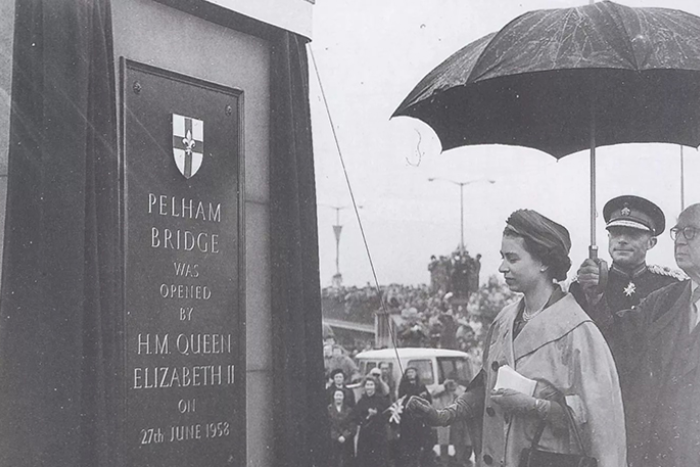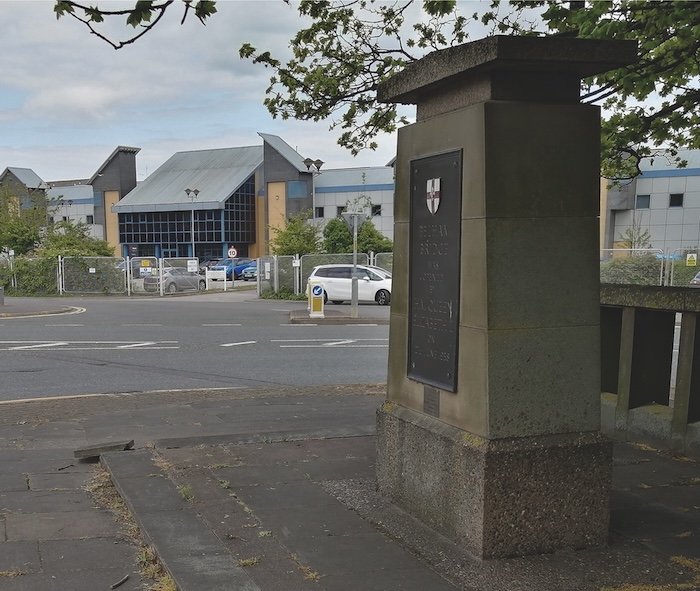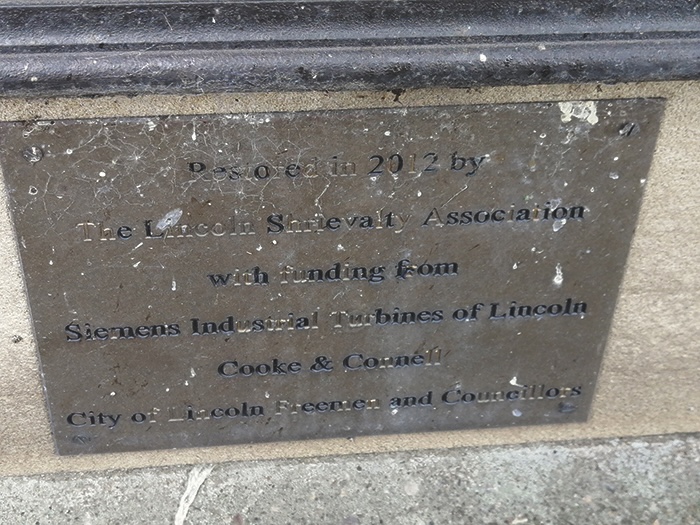
The opening of Pelham Bridge
Andrew Walker of The Survey of Lincoln examines the late Queen Elizabeth II’s first official visit to the city as monarch – and probably her wettest – on June 27, 1958, when she officially opened Pelham Bridge.
The Lincoln visit of Queen Elizabeth II and the Duke of Edinburgh in June 1958 formed the first leg of an extensive 12-day royal tour of the East Coast of England and Scotland.
They travelled to Lincoln by royal train from London. One thousand school children were due to perform morris dances at Lincoln City’s Sincil Bank ground, but it proved to be too wet so instead some community singing was hastily arranged, with 11,000 children in the stands.
One of the highlights of the visit was the official opening of Pelham Bridge, in which, under an umbrella, the Queen unveiled a special tablet marking the occasion. The development of the bridge had sparked some national interest – not least because of the innovative use of rubber bearings in the bridge’s construction, designed to cushion the effect of traffic, lessening noise and easing wear and tear.
The construction of the bridge, which began in the summer of 1955, had been part of a major redevelopment of the eastern part of central Lincoln and was to form a key component of an ambitious road improvement plan that never came fully to fruition.
The bridge over the railway replaced the busy Durham Ox railway level crossing, named after a neighbouring public house. At busy times, the crossing was closed to road traffic for 35 minutes of every hour.
The pub and 82 other properties were removed as part of the development project. The Times reported on 13 January 1958 that ‘The scheme, which has involved the demolition of much old property and has rid the city of many slums, is costing in all £600,000, of which £350,000 has gone on the building of the bridge.’
It was described as being noteworthy because of its attractive continuous curved shape, extending over a quarter of a mile. The bridge was designed by Robert Atkinson and Partners. A proposed straight section of the bridge, originally planned for the stretch immediately over the railway lines was removed from the design at the suggestion of the Arts Council of Great Britain. Although the bridge was officially opened by the Queen in June 1958, one of the carriageways had been accommodating traffic prior to Christmas 1957.
The main contractors for the project had been Tarmac Civil Engineering Ltd, working under the city engineer and surveyor A. Adlington, with consulting engineers W.S. Atkins and Partners. All the steel work for the structure had been fabricated by the long-established Butterley Company of Derbyshire, which had worked on the construction of St Pancras Railway Station. The bridge was completed ahead of schedule.
As a postscript the royal plaque unveiled by the Queen was damaged six months later by a local apprentice who had thrown the contents of a stolen partly-filled sauce bottle at friends but missed and inadvertently hit the plaque, causing it ‘to flake and peel’. In court, the defendant declared that ‘I did not think it would do that damage or I would have rubbed it off.’ He was fined £6 and ordered to pay an additional £14 costs.
To find out more about The Survey of Lincoln and its work, see www.thesurveyoflincoln.co.uk.


